How to wash your bike at a gas station without ruining it
Sometimes, we have no choice but to wash the bike with the pressure washer at the gas station or any car wash, so here's how to do it without damaging your bike.

The best way to wash your bike with pressurized water
Wherever you read, whether on social networks, websites or even in the bike manuals themselves, it is always discouraged to wash the bike using the high-pressure nozzles of gas station car washes. The main reason is because the force with which they release the water is such that it is able to reach every corner of the bike, overcoming the protection offered by the seals of the bearings and penetrating the inside of the frame, which in the long run can be a source of noise or even damage the bearings permanently and have to be replaced.
Nor should we disregard the extent to which pressurized water can reach when it comes to electronic components such as the computer or derailleurs. Although these elements are perfectly sealed against rain, the force of the pressurized water could cause irreparable damage. The paint could also be affected since in the case of having a small peck or flake on it, the force of the water could lift it.
RECOMENDADO

Black Friday 2025 cycling bargains: save on Garmin, POC, Maxxis and more

Black Friday Garmin 2025: the ultimate guide to choosing your GPS at the best price

Which profile wheels to choose according to the area where you live: mountain, flat or coast

How to wash your cycling clothes? 10 keys to make them always look new

Cycling can help you fight the effects of the time switch
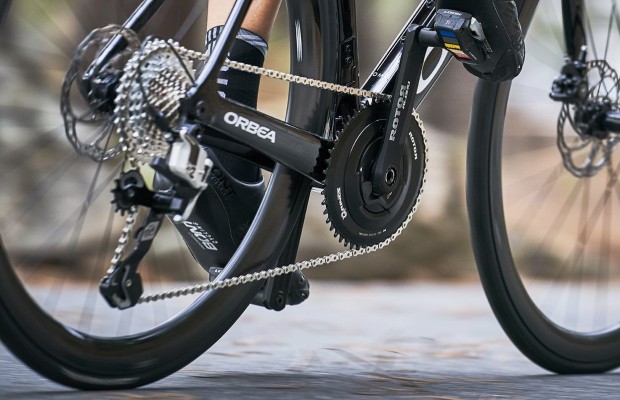
Important keys to make your training work
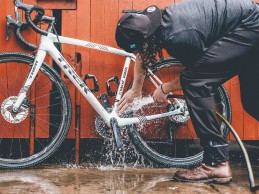
On the other hand, those who live in a small apartment in the city often have no other option to keep their bike clean than to resort to these washing stations. Let's learn how to use them without damaging your bike.
Apply common sense
When using pressurized water nozzles, the first step is to apply common sense. If the most fragile elements are the bearings, avoid pointing directly at them. We will begin from a distance of approximately one meter giving passes for the whole bike without leaving the water jet fixed centered in any place. If we see an area where the dirt resists, as long as it is not an area close to the bearings we can affect it by giving small short passes. Above all we must avoid leaving the jet fixed, especially on the rims if we want to preserve intact the adhesives of the same ones.
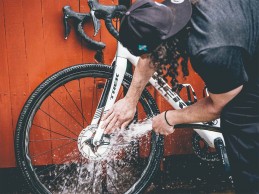
As for the areas close to the bearings, the jet should be directed as perpendicularly as possible, from above or below in the case of wheels and bottom bracket and more laterally in the headset area to avoid as far as possible the arrival of the water, trying to maintain a certain distance so that it arrives with less force.
Perfect drivetrain
The most important thing when washing the bike is that the drivetrain is spotless and then lubricated so that everything goes smoothly again.
As we mentioned before, we must be cautious if our derailleurs are electronic. In this case we will apply the method of giving a couple of short passes from a certain distance on derailleurs and levers. It will be enough to eliminate the superficial dirt that they accumulate.
We will focus our efforts on sprockets and chain. Before starting, it is advisable to spray it with degreasing liquid that helps to eliminate the mixture of lubricant and dirt that usually forms sticks.
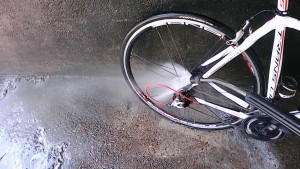
For the sprockets, we will point the water hose obliquely over the sprockets towards the rear of the bike. In this way the jet is not directed towards the bearings and the force of the water rotates the core removing the grease from all the teeth. With the chainrings, however, the jet is aimed directly at the teeth, taking care not to get too close to the bottom bracket. The mixture of dirt and grease is usually quite resistant and the force of the pressurized water makes cleaning these areas much easier.
Nor will we have to be careful with the chain where we can direct the jet straight through the inner side so that the water is directed towards the ground while we turn the cranks to cover its entire length. Here we do not mind leaving the chain completely free of lubricant because we are going to oil it after washing, but we do want to remove all the dirt that may have penetrated the joints and which is responsible for the chain wearing out and stretching as the kilometers go by.
Regarding the brakes, those of you who still use brake pads can work more on them to remove rubber residues. As for the disc calipers, again we will try to maintain the distances and give quick passes to prevent water from damaging any of the joints that maintain the tightness of the whole.
Maintenance
After finishing the wash, using the rinse option to remove the soap residue, we shake the bike a little by giving small bounces on the floor to let the excess water fall off.
We can leave it to dry for a few minutes or ride gently back home and let the wind blow over the bike to finish drying it. It is not superfluous to pass a clean cloth over the frame while the bike is still wet to remove any dirt that may have been left and leave a shiny finish.
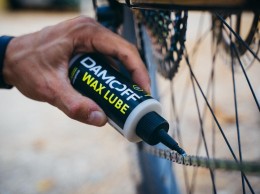
Once at home, with the bike completely dry, we will lubricate the chain and the derailleur articulation points, removing with a rag the excess that may remain on the outside and that only helps the dirt to stick again.
In any case, if you usually wash your bike at the gas station, it is a good idea, as a preventive measure, every few months, to remove the cranks, wheel axles and fork to check the condition of the bearings, clean the existing grease and apply a generous layer of new grease that not only lubricates, but also serves as a barrier to the entry of water.